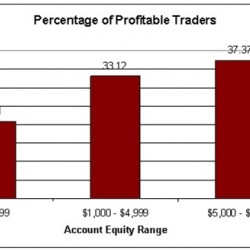| 品牌EA编程教程大全之常用函数 | 有效期至长期有效 | 最后更新2019-01-10 18:45 |
| 浏览次数204 |
EA编程教程大全之常用函数

对于每个执行的MQL4程序,一定数量的变量设定可以轻松应对图表中的价格状态:
智能交易,脚本或者是客户指标。.
资料应用到可变量的模型中来。
可以由预定义的变量分开处理。
这些数据会在开启后应用 RefreshRates()函数更新。
Ask
Bars
Bid
Close
Digits
High
Low
Open
Point
Time
Volume
Ask
double Ask
对于当前货币对的最新卖价格。使用RefreshRates()函数更新。
参见 MarketInfo().
示例:
if(iRSI(NULL,0,14,PRICE_CLOSE,0) 25)
{
OrderSend(Symbol(),OP_BUY,Lots,Ask,3,Bid-StopLoss*Point,Ask+TakeProfit*Point,
My order #2 ,3,D'2005.10.10 12:30',Red);
return;
}
Bars
int Bars
返回图表中的柱数。
参见 iBars().
示例:
int counter=1;
for(int i=1; i =Bars; i++)
{
Print(关闭[i-1]);
}
Bid
double Bid
对于当前货币对的最新买价格。使用RefreshRates()函数更新。
参见 MarketInfo().
示例:
if(iRSI(NULL,0,14,PRICE_CLOSE,0) 75)
{
OrderSend( EURUSD ,OP_SELL,Lots,Bid,3,Ask+StopLoss*Point,Bid-TakeProfit*Point,
My Order #2 ,3,D'2005.10.10 12:30',Red);
return(0);
}
Close
double Close[]
系列数组包含当前图表每个柱的收盘价格。
系列数组元素被索引入倒序的定单,即从最后一个到第一个。. 当前最后一个柱在数组中的索引为0。图表中的第一个柱的索引为Bars-1.
参见 iClose().
示例:
int handle = FileOpen( file.csv , FILE_CSV|FILE_WRITE,
if(handle 0)
{
// 表格栏标题记录
FileWrite(handle, Time;Open;High;Low;Close;Volume
// 数据记录
for(int i=0; i Bars; i++)
FileWrite(handle, Time, Open, High, Low, Close, Volume);
FileClose(handle);
}
Digits
int Digits
返回当前货币对的汇率小数位
参见 MarketInfo().
示例:
Print(DoubleToStr(Close[0], 小数位));
High
double High[]
系列数组包含当前图表每个柱的最高价格。
系列数组元素被索引入倒序的定单,即从最后一个到第一个。. 当前最后一个柱在数组中的索引为0。图表中的第一个柱的索引为 Bars-1.
参见 iHigh().
示例:
//---- 最大值
i=Bars-KPeriod;
if(counted_bars KPeriod) i=Bars-counted_bars-1;
while(i =0)
{
double max=-1000000;
k = i + KPeriod-1;
while(k =i)
{
price=High[k];
if(max price) max=price;
k--;
}
HighesBuffer=max;
i--;
}
//----
Low
double Low[]
系列数组包含当前图表每个柱的最低价格。
系列数组元素被索引入倒序的定单,即从最后一个到第一个。. 当前最后一个柱在数组中的索引为0。图表中的第一个柱的索引为 Bars-1.
参见 iLow().
示例:
//---- 最小值
i=Bars-KPeriod;
if(counted_bars KPeriod) i=Bars-counted_bars-1;
while(i =0)
{
double min=1000000;
k = i + KPeriod-1;
while(k =i)
{
price=Low[k];
if(min price) min=price;
k--;
}
LowesBuffer=min;
i--;
}
//----
Open
double Open[]
系列数组包含当前图表每个柱的开盘价格。
系列数组元素被索引入倒序的定单,即从最后一个到第一个。. 当前最后一个柱在数组中的索引为0。图表中的第一个柱的索引为Bars-1.
参见 iOpen().
示例:
i = Bars - counted_bars - 1;
while(i =0)
{
double high = High;
double low = Low;
double open = Open;
double close = Close;
AccumulationBuffer = (close-low) - (high-close);
if(AccumulationBuffer != 0)
{
double diff = high - low;
if(0==diff)
AccumulationBuffer = 0;
else
{
AccumulationBuffer /= diff;
AccumulationBuffer *= Volume;
}
}
if(i Bars-1) AccumulationBuffer += AccumulationBuffer[i+1];
i--;
}
double Point
返回当前图表的点值
参见 MarketInfo().
示例:
OrderSend(Symbol(),OP_BUY,Lots,Ask,3,0,Ask+TakeProfit*Point);
datetime Time
datetime Time[]
系列数组包含当前图表的每个柱开盘时间。数据像日期时间一样呈现时间,从1979年1月1日零点开始以秒计算。
系列数组元素被索引入倒序的定单,即从最后一个到第一个。当前最后一个柱在数组中的索引为0。图表中的第一个柱的索引为 Bars-1.
参见 iTime().
示例:
for(i=Bars-2; i i--)
{
if(High[i+1] LastHigh) LastHigh = High[i+1];
if(Low[i+1] LastLow) LastLow = Low[i+1];
//----
if(TimeDay(Time) != TimeDay(Time[i+1]))
{
P = (LastHigh + LastLow + Close[i+1])/3;
R1 = P*2 - LastLow;
S1 = P*2 - LastHigh;
R2 = P + LastHigh - LastLow;
S2 = P - (LastHigh - LastLow);
R3 = P*2 + LastHigh - LastLow*2;
S3 = P*2 - (LastHigh*2 - LastLow);
LastLow = Open;
LastHigh = Open;
}
//----
PBuffer = P;
S1Buffer = S1;
R1Buffer = R1;
S2Buffer = S2;
R2Buffer = R2;
S3Buffer = S3;
R3Buffer = R3;
}
Volume
double Volume[]
系列数组包含当前图表每个柱替克成交量。
系列数组元素被索引入倒序的定单,即从最后一个到第一个。. 当前最后一个柱在数组中的索引为0。图表中的第一个柱的索引为 Bars-1.
参见 iVolume().
示例:
if(i==0 time0 i_time+periodseconds)
{
d_volume += Volume[0];
if(Low[0] d_low) d_low = Low[0];
if(High[0] d_high) d_high = High[0];
d_close = Close[0];
}
last_fpos = FileTell(ExtHandle);
last_volume = Volume;
FileWriteInteger(ExtHandle, i_time, LONG_VALUE);
FileWriteDouble(ExtHandle, d_open, DOUBLE_VALUE);
FileWriteDouble(ExtHandle, d_low, DOUBLE_VALUE);
FileWriteDouble(ExtHandle, d_high, DOUBLE_VALUE);
FileWriteDouble(ExtHandle, d_close, DOUBLE_VALUE);
FileWriteDouble(ExtHandle, d_volume, DOUBLE_VALUE);
 客服热线:
客服热线:



























